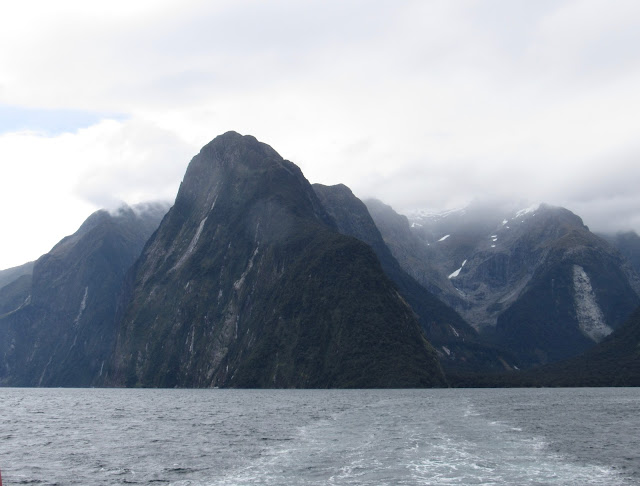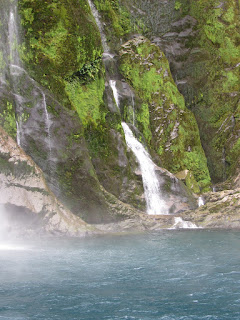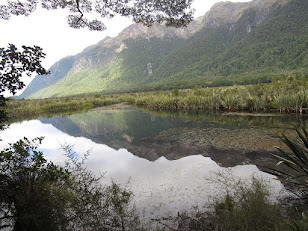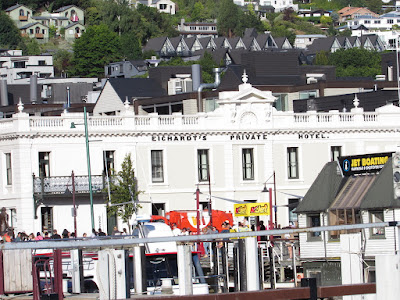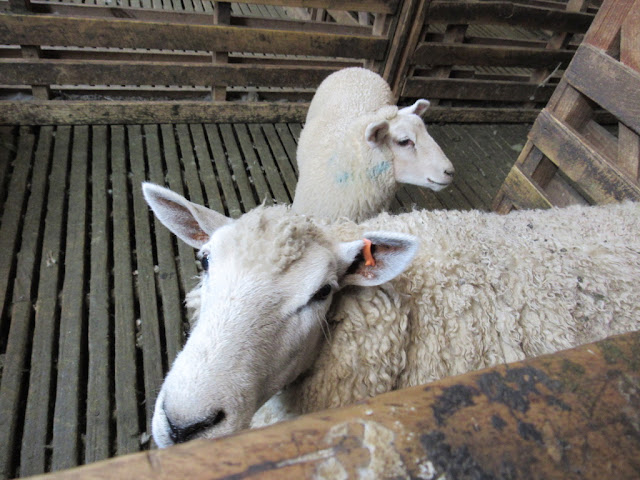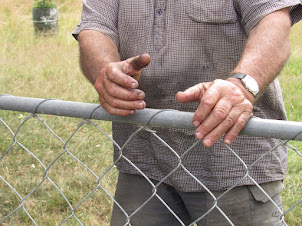One of the highlights of our Queenstown leg was our journey 180 miles west to Milford Sound near the Tasmanian Sea. The virgin forests, mountains, rivers, and waterfalls were like a return to "Jurassic Park". In fact, our bus driver-guide played the theme music from this film on his audio player as we entered the Sound.
As our boat took us through the Sound, we were dazzled by the steep mountains that met the salt water. These sights were quite moving for me and the Sound became one of several places in the world where I could sense God in the raw and untouched natural environment.
Below are some of the breath-taking sights of Milford Sound, which turned out to be both an unforgettable and unutterable experience. The waterfalls were the most intriguing, and I was able to take photos of them from different angles.








The boat captain knew how to please his passengers by moving closely to the shore where we could see seals lounging on the rocks and feel the sprinkles of waterfalls.
 Our
trusty boat (on the left) toured us through these beautiful waters. Upon
boarding, we quickly claimed a table where we would eat our provided and delicious
box lunch that included a well-stacked ham and cheese sandwich, an apple, and a brownie. We gobbled down our lunches so we could go out on deck to see the natural wonders before us. Although
the boat captain provided a commentary, it was difficult to hear.
However, the scenery provided enough visual stimulation that the
commentary didn't matter.
Our
trusty boat (on the left) toured us through these beautiful waters. Upon
boarding, we quickly claimed a table where we would eat our provided and delicious
box lunch that included a well-stacked ham and cheese sandwich, an apple, and a brownie. We gobbled down our lunches so we could go out on deck to see the natural wonders before us. Although
the boat captain provided a commentary, it was difficult to hear.
However, the scenery provided enough visual stimulation that the
commentary didn't matter.
Our bus took off with everyone on it at the appointed time. However, it wasn't long before one of the kids on the bus vomited and then started crying out of embarrassment. Blinky, our guide, was seated near her and witnessed the disaster. He quickly ran up to the driver to tell him to stop the bus. Then he helped to clean up the mess, which was considerable. I've never seen such an emergency before on a trip but these quick-witted travel professionals were able to efficiently take care of it.
We
made two other planned stops: one to Mirror Lakes and the other to
a mountain lookout site. So even though the trip was long, the stops and the scenery took our minds off of the clock and made the ride quite an enjoyable. Below are some shots I took from the bus.
 Trees communicate with one another. The soils here are not that good and trees live by entwining themselves with each other's roots. If one of the trees of the same root system goes bad, the entire group suffers and may die. The white line on this mountain illustrates this effect. It means that there are no trees there. Nature never ceases to amaze!
Trees communicate with one another. The soils here are not that good and trees live by entwining themselves with each other's roots. If one of the trees of the same root system goes bad, the entire group suffers and may die. The white line on this mountain illustrates this effect. It means that there are no trees there. Nature never ceases to amaze!






